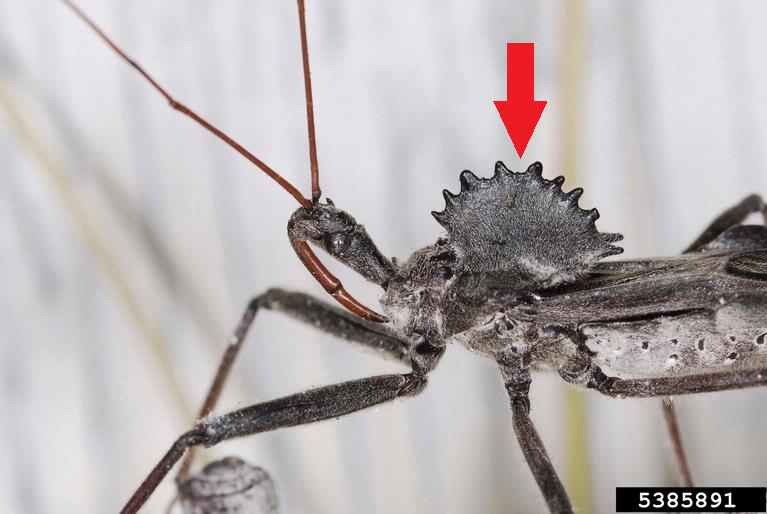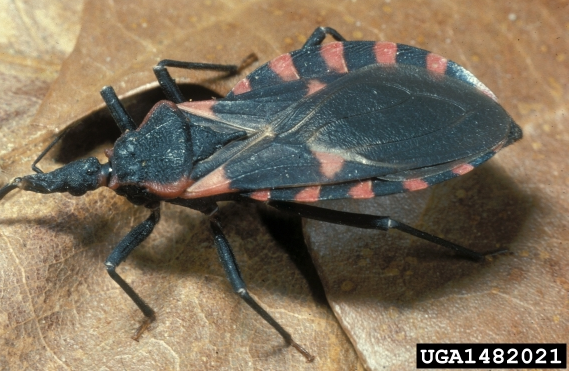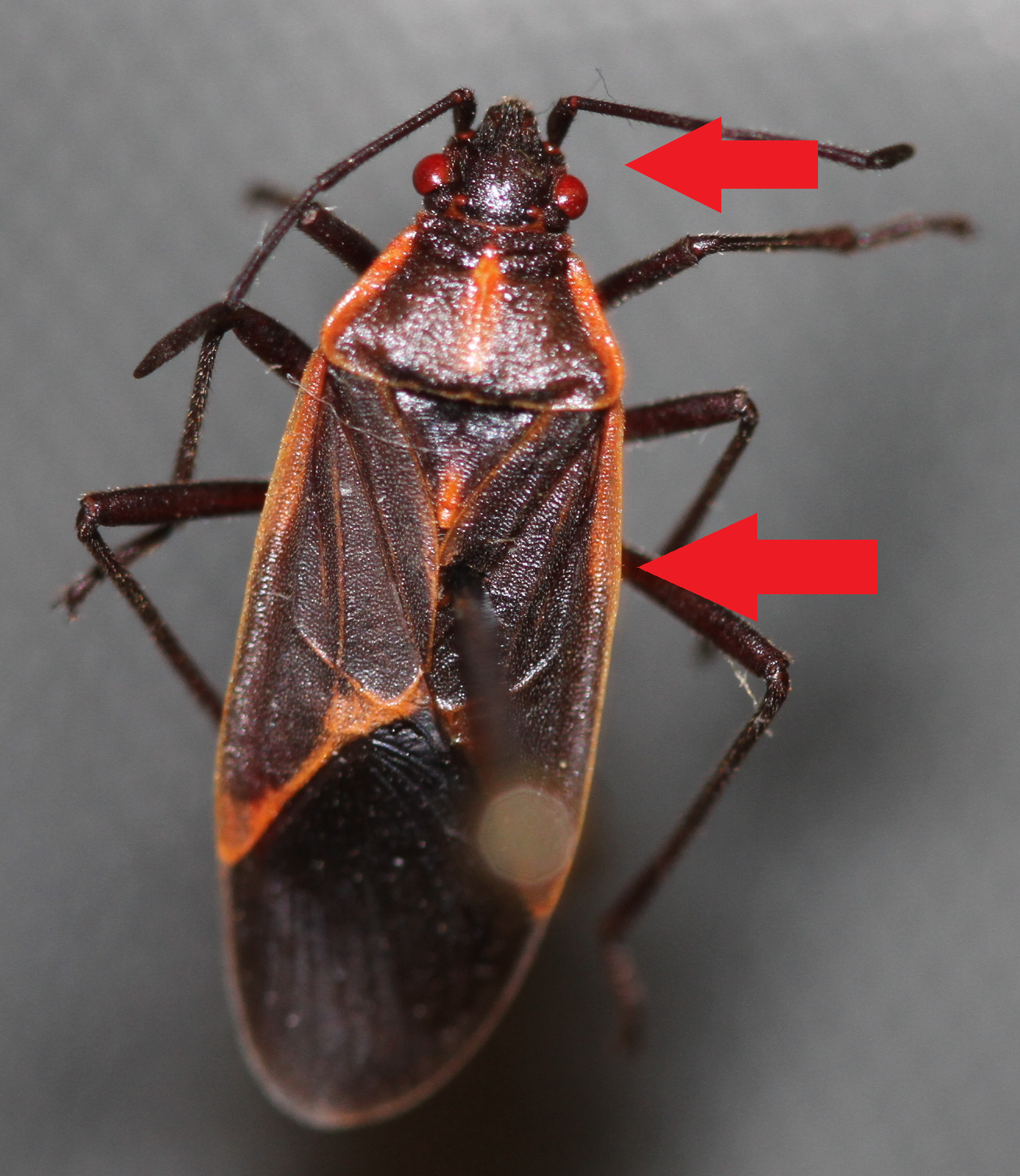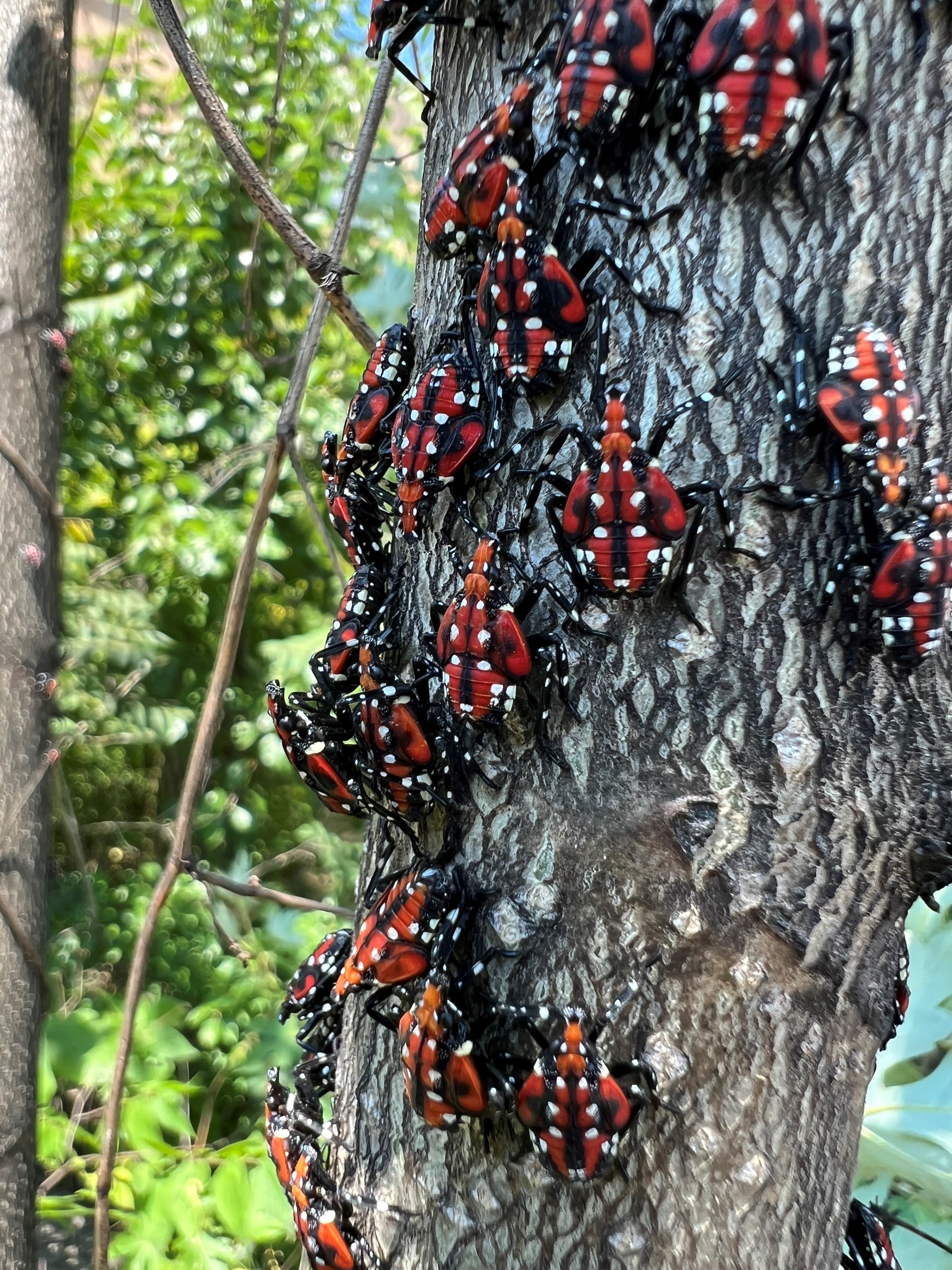Picture of the Week
August 15, 2022
I think I found a kissing bug!
Alicia Kelley, CAPS State Survey Coordinator, Purdue University
The Purdue Plant Pest Diagnostic Lab has received several submissions this year from citizens who are concerned they have found a kissing bug. This is understandable, considering that kissing bugs pose serious health risks. Kissing bugs are blood-feeding insects in the genus Triatoma, which vector the parasite Trypanosoma cruzi, the causal agent of Chagas disease. Several species of kissing bugs occur in the United States; however, the vast majority of species are restricted to southern and southwestern states. Kissing bugs are rare in northern states, but if one is found, it is usually Triatoma sanguisuga, or the eastern conenose kissing bug.
So how do you know if you have potentially discovered a kissing bug, or one of its look-alikes?
The most common insect submitted to the PPDL this year has been one very common look-alike: the wheel bug, Arilus cristatus. It’s not surprising these are often mistaken for kissing bugs. Both insects are in the assassin bug family (Reduviidae), and both can cause painful bites with their piercing mouthparts. Unlike kissing bugs, however, wheel bugs are beneficial predators which feed on other insects.
How can you tell them apart? The most striking feature that sets apart the wheel bug is its namesake – the wheel-like crest on its thorax (the middle section of an insect’s body). It looks like a spiked semi-circle behind the insect’s head. If you see this, you definitely have a wheel bug.
Click image to enlarge
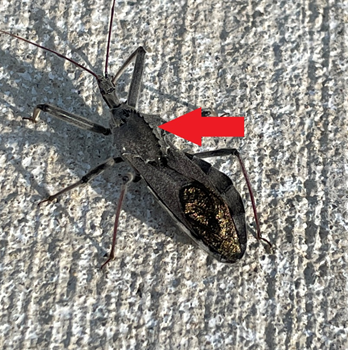 Figure 1. A wheel bug (Arilus cristatus) in Fishers, IN, submitted to PPDL. Arrow indicates the prominent cog-like “wheel” on the thorax. Image credit: Ashley Hoffmann
Figure 1. A wheel bug (Arilus cristatus) in Fishers, IN, submitted to PPDL. Arrow indicates the prominent cog-like “wheel” on the thorax. Image credit: Ashley Hoffmann You can also distinguish a wheel bug from a kissing bug by its size and color. Wheel bugs are 1-1.25 inches long, and they are dull greyish-brown in color. Eastern conenose kissing bugs are 0.6-0.9 inches long, mostly black in color, with lateral orange-red stripes on their abdomen.
Another common, harmless insect we see in the Midwest is a boxelder bug (Boisea trivittata). These insects also have red markings, so they are sometimes confused for kissing bugs. However, boxelder bugs have stripes that run longitudinally along the wing margins. They also have a head as wide as their body and bright red eyes. Compare the photo below with the image of the kissing bug, which has a narrow, conical head and black eyes. See another article on invasive insects by Cliff Sadof by clicking on the photo to the right.

